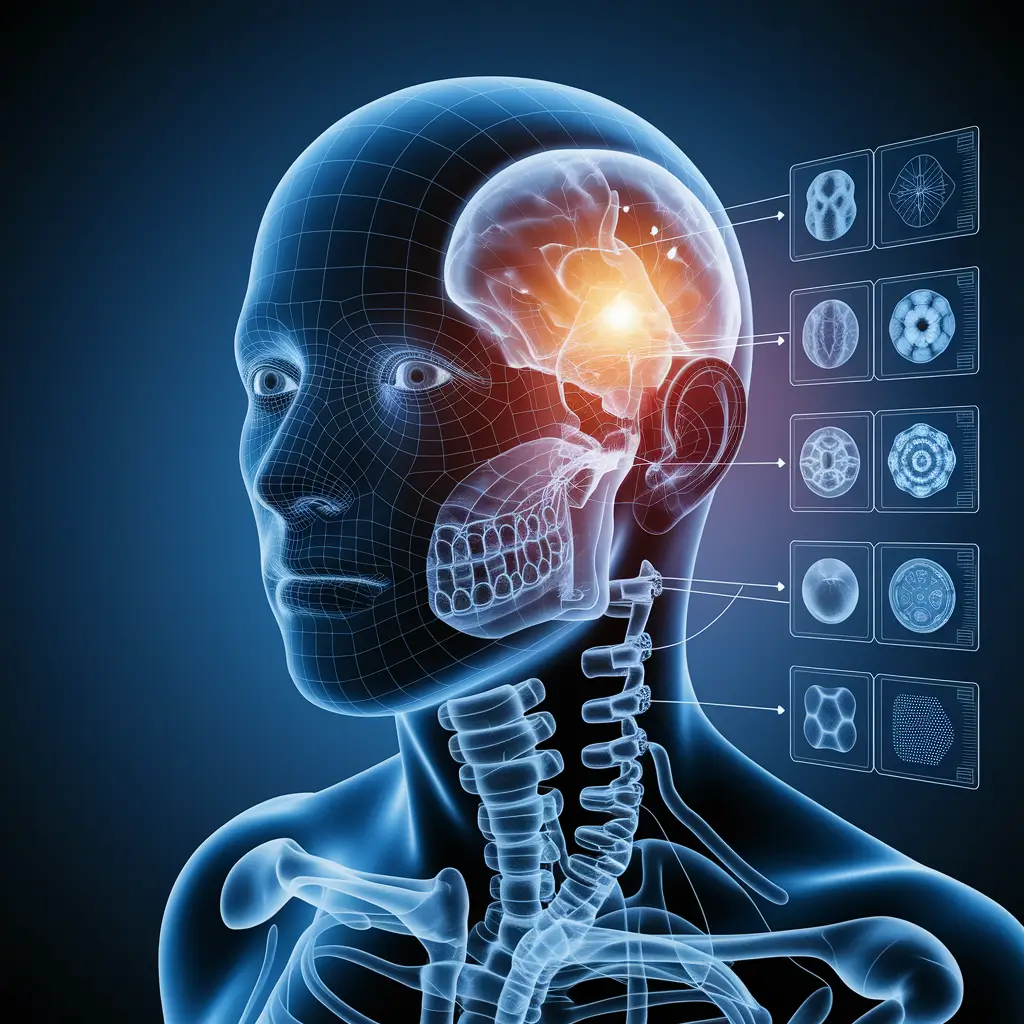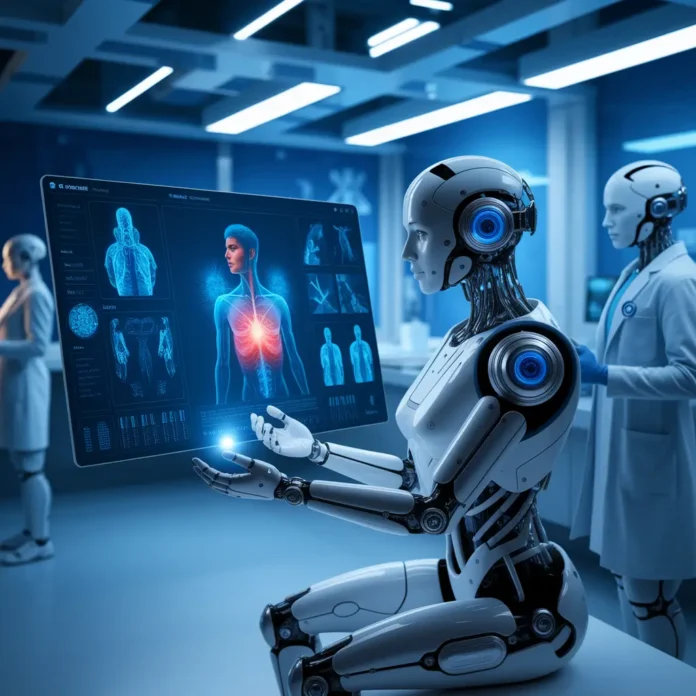Microsoft AI Diagnostic Tool is redefining the future of medicine by delivering diagnostic accuracy far beyond human capability. Microsoft’s latest innovation, the AI Diagnostic Orchestrator (MAI-DxO), demonstrates how artificial intelligence can revolutionize healthcare, outperforming top doctors with unmatched speed, precision, and cost-efficiency.
What Is the Microsoft AI Diagnostic Tool?
The Microsoft AI Diagnostic Tool, also known as MAI-DxO, is a cutting-edge medical diagnostic platform powered by artificial intelligence. It’s engineered to simulate a team of expert physicians analyzing patient data in real time — from symptom collection to final diagnosis. This simulation transforms vast pools of medical data through collaborative AI reasoning, delivering breakthrough accuracy up to 85.5% in complex cases.
How the Microsoft AI Diagnostic Tool Works
This groundbreaking system functions like a group of specialist doctors collectively managing a clinical case. MAI-DxO progresses in designated steps, mirroring real-world diagnostic methods:
- Symptom Analysis: Parses initial patient complaints and history records.
- Dynamic Investigation: Suggests tests, asks logical follow-up questions, and refines hypotheses.
- Test Optimization: Selects the most precise and cost-effective diagnostic procedures.
- Multi-Model Fusion: Leverages multiple major AI models like GPT-4, Claude, and Gemini working in unison.
- Self-Verification: Validates diagnostic logic and consistency before presenting conclusions.
Diagnostic Accuracy of Microsoft AI Diagnostic Tool
In clinical assessments, the Microsoft AI Diagnostic Tool was benchmarked against 21 experienced doctors from the U.S. and U.K., analyzing 304 cases from the New England Journal of Medicine. The results were astonishing:
- MAI-DxO: 85.5% diagnostic accuracy
- Human Doctors: ~20% accuracy
This significant performance difference stems from AI’s unparalleled ability to synthesize data, test hypotheses, and use expansive medical literature repositories instantaneously.
Cost and Time Efficiency of Microsoft AI Diagnostic Tool
One of the MAI-DxO’s most impactful features is its decision-making based on cost constraints. In trials, it lowered diagnostic expenses by an average of 20%. By reducing duplicate and unnecessary testing while maintaining accuracy, it brings affordability to the forefront of modern medicine.
Multi-Model Collaboration in Microsoft AI Diagnostic Tool
Unlike single-model systems, the Microsoft AI Diagnostic Tool orchestrates a panel of large language models (LLMs), working together as virtual medical agents. These include:
- GPT-4
- Claude
- Gemini
- Llama
- Grok
- DeepSeek
This powerful orchestration ensures multi-expert reasoning, covering a wider scope of specialties and reducing the margin of error.
Core Architecture of Microsoft AI Diagnostic Tool
The tool employs a five-agent system that simulates discrete physician tasks, ranging from differential diagnosis to test approval. Each AI persona operates independently but contributes to a unified diagnostic output. This collaborative method enables cross-validation of decisions, reducing diagnostic risk and bias.
Benefits of Microsoft AI Diagnostic Tool in Low-Resource Settings
MAI-DxO is designed to work flexibly within budget constraints. This makes it ideal for under-resourced environments, such as rural healthcare centers or public hospitals, where both financial and medical expertise may be limited.

Its model-agnostic architecture ensures it can run on any compatible large language model at localized capacity.
Potential Integration in the Healthcare Ecosystem
Microsoft envisions the AI Diagnostic Tool operating across major healthcare touchpoints:
- In Hospitals: Assisting clinicians in decision-making.
- Consumer Tools: Enhancing platforms like Bing Health and Microsoft Copilot for personal wellness.
- Documentation Systems: Integrating into Dragon Medical Copilot.
- Radiology Pipelines: Boosting capabilities in tools like RAD‑DINO.
Real-World Testing and Limitations of Microsoft AI Diagnostic Tool
While promising, MAI-DxO hasn’t yet been deployed in actual clinical environments. Real-world constraints such as incomplete patient histories, urgent care deadlines, diverse demographics, and unpredictable symptoms will test the system’s robustness beyond simulated conditions.
Ethical Concerns and Regulatory Overview of Microsoft AI Diagnostic Tool
Despite automation advances, critical concerns arise in areas like:
- Health data bias
- Fair access to AI diagnostics
- Global compliance and approvals
Future evaluation phases will prioritize lab testing, safety measures, and feedback from global regulatory bodies.
Comparative Table: Microsoft AI Diagnostic Tool vs Human Doctors
| Criteria | MAI-DxO | Human Doctors |
|---|---|---|
| Accuracy on Complex Cases | 85.5% | 20% |
| Time to Diagnosis | Seconds | 30–60 minutes |
| Cost Control | Built-in optimization | Variable |
| Bias Awareness | Controlled by multi-agent review | Human subjectivity risk |
Doctors’ Perspectives on Microsoft AI Diagnostic Tool
Healthcare professionals acknowledge MAI-DxO’s potential to reduce workload and minimize burnout. Many believe it could act as a high-precision co-pilot, helping doctors focus on patient care, rather than administrative diagnostics or data review.
Microsoft AI Diagnostic Tool and the Future of Telehealth
With telemedicine booming post-pandemic, MAI-DxO could empower virtual consultations through instant second opinions and real-time diagnostic suggestions, further boosting remote care efficiency.
Clinical Trial Pipeline Ahead for Microsoft AI Diagnostic Tool
The next roadmap milestone includes inclusive trials addressing common disorders in practical settings. These tests will help validate the tool’s safety, real-time utility, and physician-complementing roles — turning AI from assistant to indispensable partner.
Pros and Cons of Microsoft AI Diagnostic Tool
Pros:
- Significantly higher diagnostic accuracy
- Lower diagnostic cost
- Rapid decision-making
- Reduces physician workload
Cons:
- Yet to prove real-world stability
- Possible diagnostic bias depending on data
- Regulatory barriers in implementation
Conclusion: Why Microsoft AI Diagnostic Tool Is the Future of Medicine
The Microsoft AI Diagnostic Tool is not here to replace doctors but to enhance their capabilities with precision, speed, and scalability previously thought impossible. If future clinical use mirrors lab results, MAI-DxO could redefine healthcare access and affordability globally. It’s a testament to what AI can achieve when designed to collaborate — not compete — with human expertise.
Frequently Asked Questions About Microsoft AI Diagnostic Tool
How accurate is the Microsoft AI Diagnostic Tool?
MAI-DxO achieved 85.5% accuracy in complex diagnostic cases, outperforming experienced doctors’ average of 20%.
What makes this AI diagnostic tool different?
It uses multiple AI models in a team-based orchestration with built-in test optimization and self-verification before final diagnosis.
Can it be used in hospitals today?
Not yet. It’s currently in the research phase and awaiting clinical trial validation.
Which AI models are involved?
Models include GPT-4, Claude, Gemini, Llama, Grok, and DeepSeek.
Will it replace doctors?
No, the goal is to assist clinicians, reduce workloads, and improve diagnostic accuracy as a co-pilot system.



